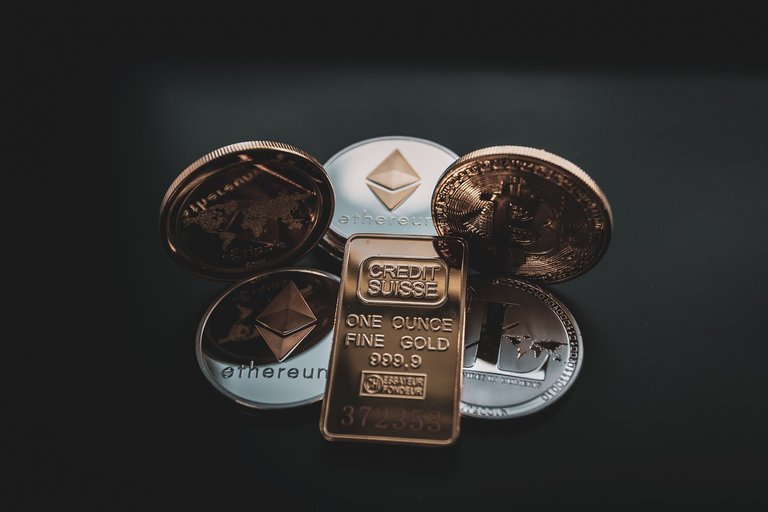CAN STABLECOINS OUTSMART BITCOIN???
While cryptocurrencies like Bitcoin dominate the headlines, their stance doesn’t reflect the industry as a whole. Emerging assets such as stablecoins can cause an entire demand curve to shift the virtual asset ecosystem, addressing the desire for a solution that bridges the gap between fiat currency and cryptocurrency. Stablecoins have experienced periods of rapid growth, but in the absence of proper regulation, the wider population will be reluctant to adopt them.

At present, it’s not certain what stablecoin model(s) will prevail, yet as technology continues to drive innovation in the digital asset landscape, stablecoins will become an integral pillar of the cryptocurrency economy.
Even if Bitcoin has an unbeatable command over the cryptocurrency market, there are many ways in which stablecoins might outsmart, and in some cases, they might outshine it. Firstly Definition of terms

Stablecoins: What they are, The Types, And How They Work
Stablecoins are digital assets issued by a private company and transferred via distributed ledger technology, commonly referred to as blockchain. The value of a stablecoin is pegged (or tied) to that of a currency, commodity, or financial instrument to ensure price stability. The aim is to maintain a constant value regardless of the fluctuations in the market. Due to the frequent volatility of digital assets like Bitcoin, many are unsure about the prospects of their investments, so they prefer to put their money in stablecoins. One of the most popular stablecoins is the USD coin, which is pegged to the US dollar on a 1:1 basis.

Stablecoins are more useful as a medium of exchange, but they don’t currently serve as legal tender, although they hold their value steady in various ways. Behind stablecoins, there’s a cash reserve that is maintained by independent custodians and is regularly audited. This money serves as collateral for the stablecoin, which basically means that if a holder wants to cash out on their stablecoins, an amount of money is taken from the reserve.

The stablecoins in circulation aren’t subject to any regulations, as mentioned previously. Lawmakers are taking them into account, but they’ve yet to pass legislation governing stablecoins.
Types of STABLECOINS
▪︎Fiat-backed stablecoins

Fiat-backed stablecoins maintain financial reserves in fiat currencies held by a regulated institution such as a bank. The leading fiat currency to use is the US dollar. Many exchanges allow customers to purchase and withdraw fiat-backed stablecoins with no fees.
▪︎ Commodity-backed stablecoins –

Commodity-based stablecoins are tied to the price of commodities such as gold, real estate, or metals. The most popular commodity to be collateralized is gold, as it’s a less volatile financial instrument. Although they’re difficult to liquidate, commodity-backed stablecoins are frequently used as payment methods because they’re less volatile than traditional cryptocurrencies.
▪︎Crypto-backed stablecoins –

Crypto-backed stablecoins are collateralized by other cryptocurrencies. They rely on a combination of smart contracts on the blockchain to minimize unauthorized access to crypto funds. Because cryptocurrency is prone to high volatility, these stablecoins tend to be overcollateralized.
▪︎ Algorithmic stablecoins

Algorithmic stablecoins don’t use any form of collateral to achieve stability. The stablecoins’ value is maintained stable by controlling the supply through an algorithm, i.e., a computer running a preset formula. New tokens are issued when the price of the stablecoins goes above the target price.
COMPARING STABLECOINS WITH OTHER CRYPTOCURRENCIES

Since the value of cryptocurrencies isn’t tied to that of an asset or algorithm, cryptocurrency is volatile, so investors are just as likely to lose everything as they are to make any gains. By contrast, stablecoins remain equal to the value of a more traditional asset, therefore, offering more investment opportunities. Many stablecoins can generate passive income, so you should consider converting some or all of your holdings to stablecoins. It’s an excellent way to manage your exposure to volatile digital assets.
If NFTs are the gateway for individuals to enter Web3, stablecoins serve the same purpose for businesses. Stablecoins can be used for blockchain-based gaming and decentralized finance tools as units of account, making it possible to transfer funds globally

IN CONCLUSION; All things considered, if you’re interested in digital assets but consider that Bitcoin is too volatile, you can invest in stablecoins. Provided the value of the asset the stablecoin is tied to remains stable, the stablecoin’s price will remain stable as well.
Thank you for Reading ❤

About LeoFinance
LeoFinance is a blockchain-based Web3 community that builds innovative applications on the Hive, BSC, ETH and Polygon blockchains. Our flagship application: LeoFinance.io allows users and creators to engage & share micro and long-form content on the blockchain while earning cryptocurrency rewards.
Our mission is to democratize financial knowledge and access with Web3.
Twitter: https://twitter.com/FinanceLeo
Discord: https://discord.gg/E4jePHe
Whitepaper: https://whitepaper.leofinance.io
Our Hive Applications
Join Web3: https://leofinance.io/
Microblog on Hive: https://leofinance.io/threads
LeoMobile (IOS): https://testflight.apple.com/join/cskYPK1a
LeoMobile (Android): https://play.google.com/store/apps/details?id=io.leofi.mobile